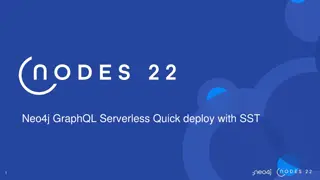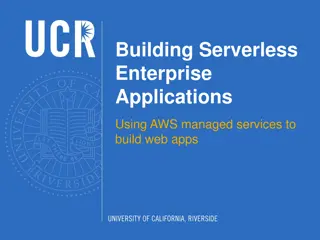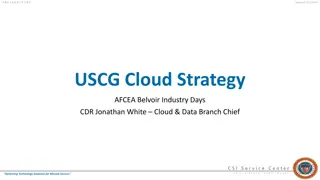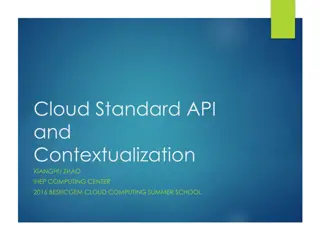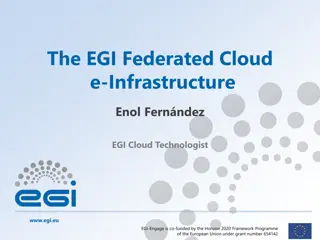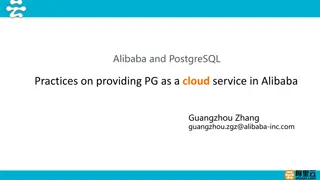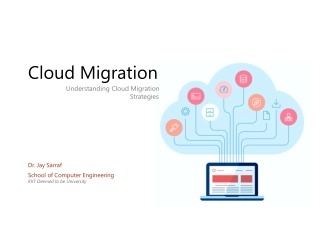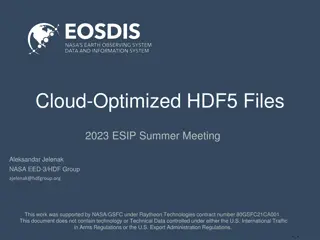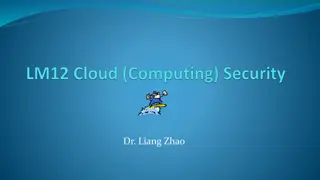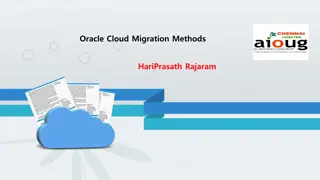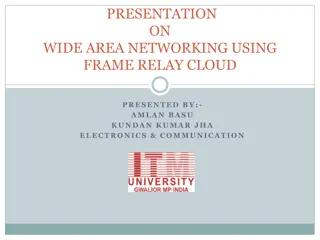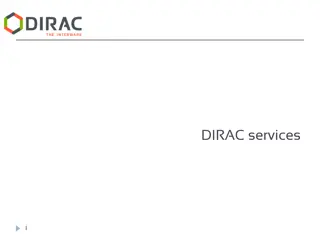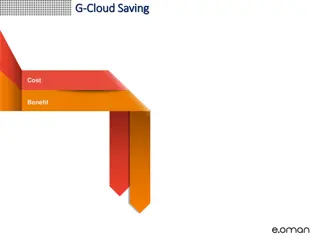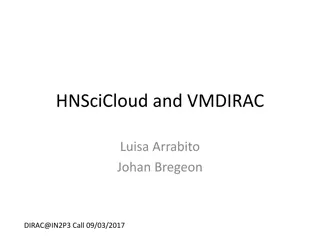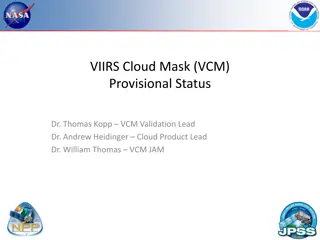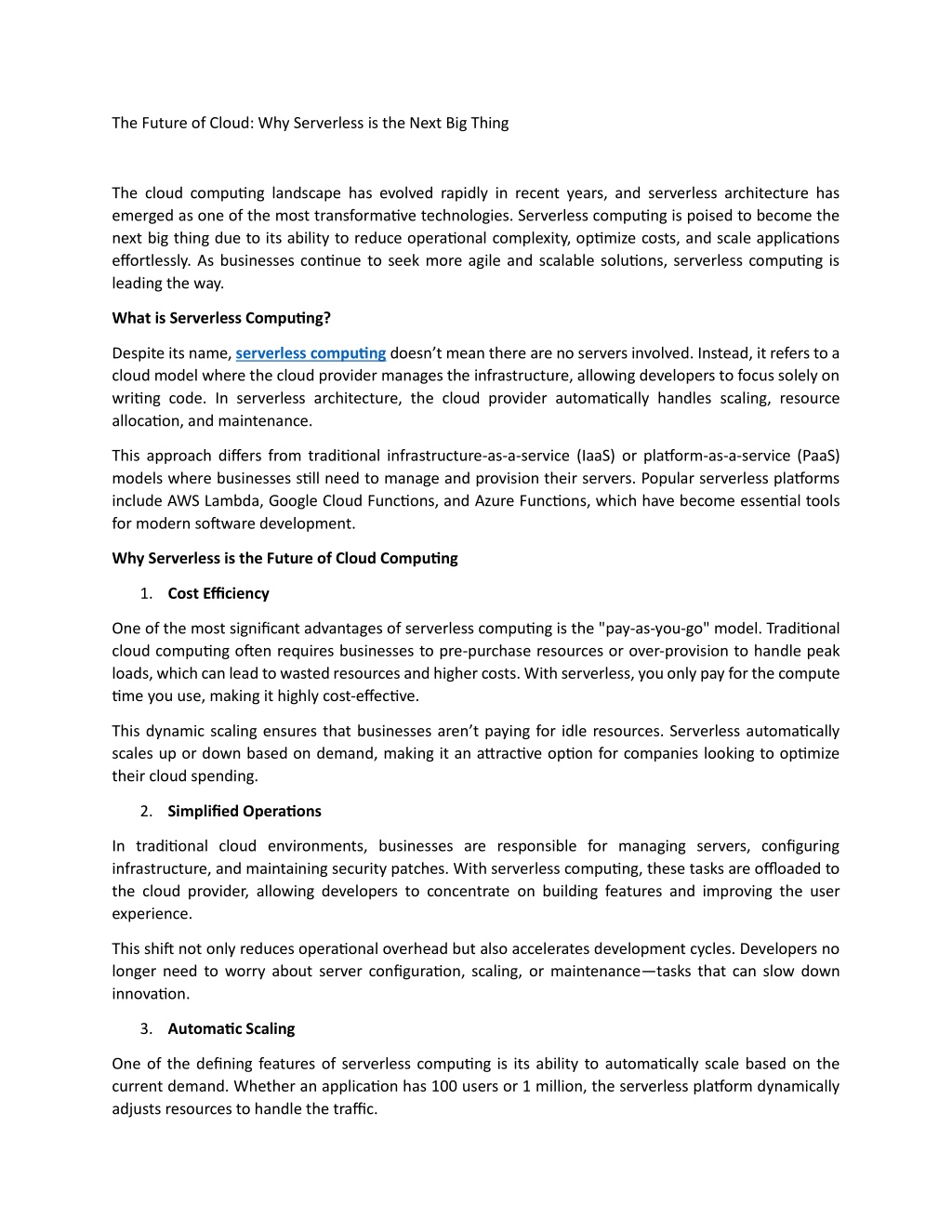
The Future of Cloud Why Serverless is the Next Big Thing
The cloud computing landscape has evolved rapidly in recent years, and serverless architecture has emerged as one of the most transformative technologies.
Download Presentation

Please find below an Image/Link to download the presentation.
The content on the website is provided AS IS for your information and personal use only. It may not be sold, licensed, or shared on other websites without obtaining consent from the author. Download presentation by click this link. If you encounter any issues during the download, it is possible that the publisher has removed the file from their server.
E N D
Presentation Transcript
The Future of Cloud: Why Serverless is the Next Big Thing The cloud computing landscape has evolved rapidly in recent years, and serverless architecture has emerged as one of the most transformative technologies. Serverless computing is poised to become the next big thing due to its ability to reduce operational complexity, optimize costs, and scale applications effortlessly. As businesses continue to seek more agile and scalable solutions, serverless computing is leading the way. What is Serverless Computing? Despite its name, serverless computing doesn t mean there are no servers involved. Instead, it refers to a cloud model where the cloud provider manages the infrastructure, allowing developers to focus solely on writing code. In serverless architecture, the cloud provider automatically handles scaling, resource allocation, and maintenance. This approach differs from traditional infrastructure-as-a-service (IaaS) or platform-as-a-service (PaaS) models where businesses still need to manage and provision their servers. Popular serverless platforms include AWS Lambda, Google Cloud Functions, and Azure Functions, which have become essential tools for modern software development. Why Serverless is the Future of Cloud Computing 1.Cost Efficiency One of the most significant advantages of serverless computing is the "pay-as-you-go" model. Traditional cloud computing often requires businesses to pre-purchase resources or over-provision to handle peak loads, which can lead to wasted resources and higher costs. With serverless, you only pay for the compute time you use, making it highly cost-effective. This dynamic scaling ensures that businesses aren t paying for idle resources. Serverless automatically scales up or down based on demand, making it an attractive option for companies looking to optimize their cloud spending. 2.Simplified Operations In traditional cloud environments, businesses are responsible for managing servers, configuring infrastructure, and maintaining security patches. With serverless computing, these tasks are offloaded to the cloud provider, allowing developers to concentrate on building features and improving the user experience. This shift not only reduces operational overhead but also accelerates development cycles. Developers no longer need to worry about server configuration, scaling, or maintenance tasks that can slow down innovation. 3.Automatic Scaling One of the defining features of serverless computing is its ability to automatically scale based on the current demand. Whether an application has 100 users or 1 million, the serverless platform dynamically adjusts resources to handle the traffic.
This auto-scaling feature is especially useful for businesses that experience unpredictable or fluctuating workloads. For example, an e-commerce platform during a flash sale or a news website after breaking news can see sudden surges in traffic. Serverless ensures that applications perform seamlessly without manual intervention, reducing downtime and improving customer experiences. 4.Faster Time to Market Serverless architecture aligns well with modern development practices like DevOps and continuous integration/continuous deployment (CI/CD). By automating much of the infrastructure management, serverless allows developers to deploy code faster and more frequently. This results in a quicker time to market for new features, bug fixes, and updates. Developers can also take advantage of pre-built serverless functions, which further speeds up development. By focusing on code rather than infrastructure, businesses can innovate more rapidly and stay ahead of the competition. 5.Better Resource Utilization In a traditional cloud environment, businesses often need to over-provision servers to handle peak loads. This leads to inefficiencies and higher costs when resources sit idle during off-peak times. Serverless computing ensures optimal resource utilization by dynamically allocating only what is needed at any given moment. With serverless, the cloud provider manages resources based on the actual traffic, reducing the need for over-provisioning and improving resource efficiency. This is particularly beneficial for companies with fluctuating demand or unpredictable traffic patterns. The Road Ahead for Serverless Computing As more organizations adopt cloud-native strategies, serverless computing will continue to grow in popularity. According to industry experts, the demand for serverless solutions will increase as businesses look for more agile, cost-efficient, and scalable cloud platforms. Serverless is also expected to play a key role in the development of emerging technologies such as edge computing and artificial intelligence (AI), providing developers with the flexibility to build, test, and deploy applications faster than ever before. Conclusion Serverless computing is reshaping the future of cloud architecture by providing businesses with a more flexible, cost-efficient, and scalable solution. With its ability to simplify operations, reduce costs, and accelerate development, serverless is becoming the go-to choice for companies looking to innovate quickly and efficiently. As the cloud continues to evolve, serverless will undoubtedly be a key driver of the next generation of software development, making it the next big thing in cloud computing. Read More: https://techhorizonsolutions.blogspot.com/2024/09/the-future-of-cloud-why-serverless- is.html


